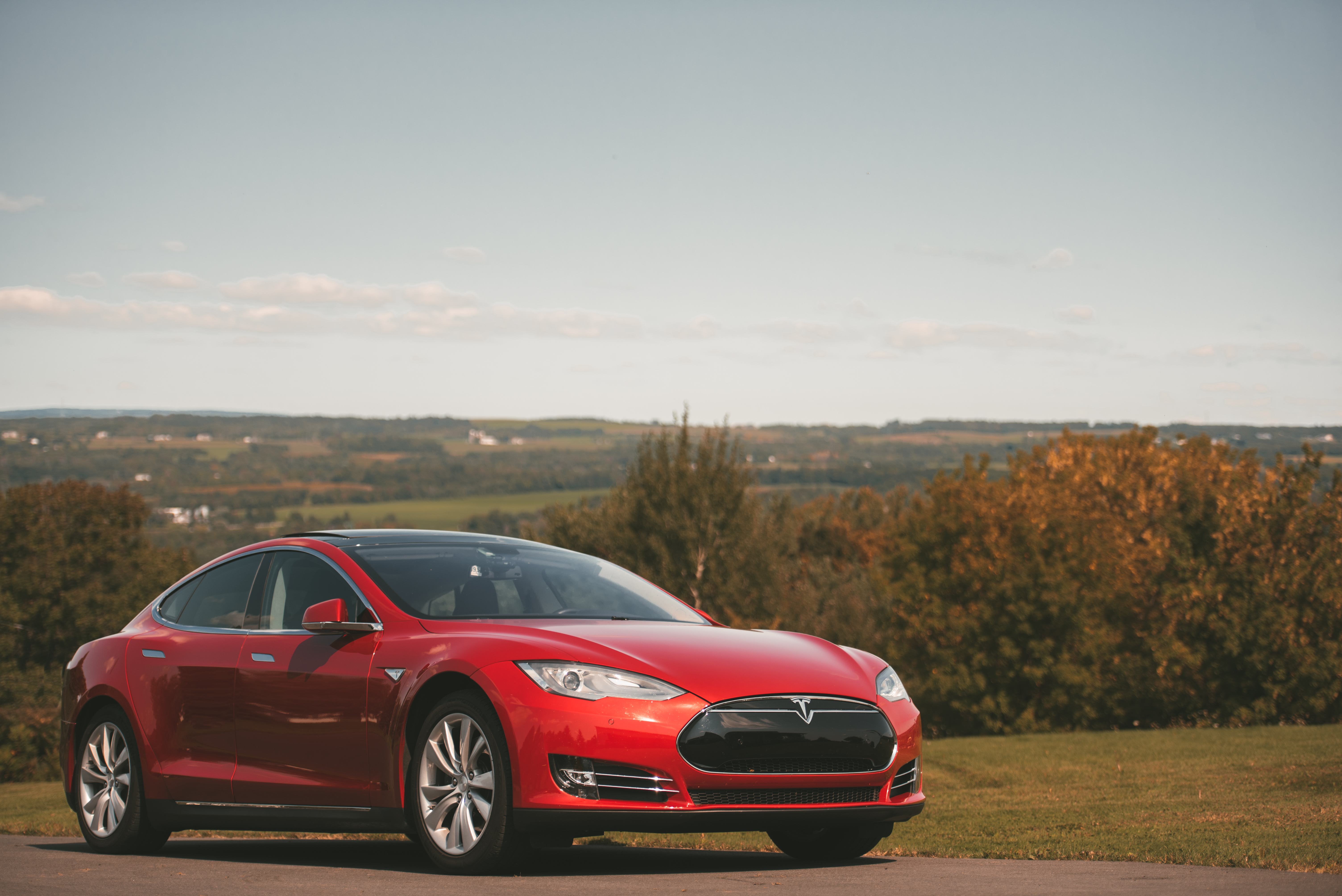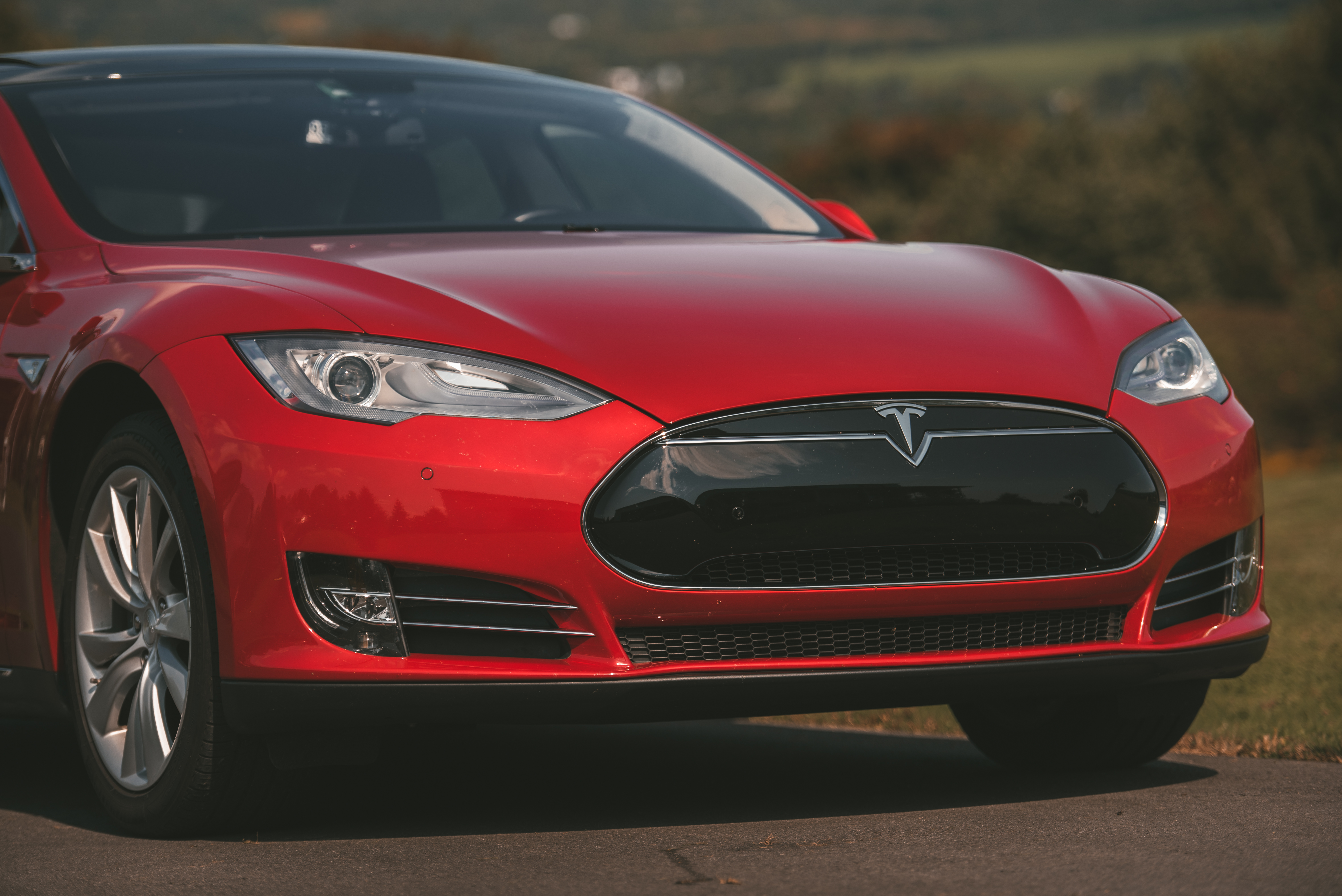Words Bob Sblendorio, photos Thomas Sblendorio:
After a long time of resisting anything electric, especially an all-electric, there are now cracks in my reciprocating only mind. Meet Dave Griffin, owner of a 2014 Tesla Model S and a resident expert in all things Tesla.
Henry Ford (and others) experimented with producing electric cars in the early 1900s, but ultimately they all failed to the more practical gas reciprocating engine. Over one hundred years later, here we go again, producing all-electric cars with many of the same challenges they faced back then: the time it takes to charge the battery, where to charge the battery, the limited range and more. But things are different now.

“As a kid, I always loved fast performance cars, but as an adult I was always forced to buy a practical kind of car. Those worlds collided with this car. I have a car with great performance, which is very efficient. There’s no compromise with owning a Tesla,” explained Dave.

Tesla Model S
The Tesla Model S is a second generation Tesla car. The first generation was an expensive 2-seat Roadster, which was manufactured in limited quantities. The intent was to generate capital so the company could build the Model S, which was released in 2012. It’s an all-electric, 4-door sedan, offered with a variety of options. Dave’s car has the bigger 85 kWh battery, smart air suspension, an all glass panoramic roof, and a premium sound system. The cost, with all the options, was $98,820. The car includes unlimited, life-time, free electric charging from any of the Tesla Supercharger stations around the country. The car has become his daily driver, which includes annual trips to Florida.
The interior has a large 17” touchscreen monitor, prominently positioned in the center of the dashboard. From the touchscreen, pretty much everything in the car is controlled. When traveling on an extended trip, like when Dave goes to Florida, the on board computer calculates all the stops based on the locations of the charging stations. Typically, the stops take about 20-25 minutes and charge the battery to 80%. Dave explained that usually the battery is charged in a manageable amount of time and often before he is ready to go. He is notified on his cell phone when the car is ready to go. The battery is good for about 235 miles per charge, and up to 265 miles depending on driving conditions.

For the life of the car, there are ongoing free over-the-air software updates. For example, in Dave’s car a hill start feature was added, a trip planner, updates to the maps, and the interface display was redesigned for a more modern look…all while the car was parked in his garage.
Battery
In 2014, the Model S was available in two battery sizes, the 60 and 85 kWh. The newer models offer even larger batteries, up to 100 kWh with a range of 335 miles per charge. The batteries are lithium-ion, consisting of thousands of cells. In the 85 kWh battery, there are 7,104 cells. When necessary, the battery is cooled or warmed to improve efficiency and longevity. The same climate system that is used for the cabin also controls the battery temperature. Together, these features extend the overall efficiency and life of the battery. Even with these features, there is some degradation of the battery over time. One study indicated a 6% loss after 200,000 miles.
The batteries are heavy and add a lot of weight to the car. In the case of the Model S, the battery weighs 1,200 lbs, making the overall weight of the car 4,597 lbs. To compensate, the frame and body panels are made from lighter weight aluminum.

Charging Options
Basically, there are three charging options available: 120-volt, utilizing the standard outlet in a house; 240-volt, which would be like a standard cooking range outlet; and then there is the Tesla Supercharger stations. The Supercharger option provides the maximum charging wattage and thereby takes the least amount of time to charge the battery. As a practical matter, even though the 120-volt is an available option, it will likely not be used much because of the very slow charging rate. Dave explained that he and most owners typically charge the car nightly using a 240-volt outlet in their garage and use the Supercharger stations only for long road trips. In essence, your garage is your personal “fuel” station.
The Supercharger stations have been built with many charging stalls in anticipation of significant growth because of the lower priced Tesla Model 3, starting to be manufactured now.. For example, the charging station in North Utica has eight stalls, and at the Crossgates Mall in Albany (the biggest station in the Northeast) there are twenty stalls. As of June 2017, there are 386 supercharging stations throughout the US and that is rapidly increasing. At this time, the charging stations are exclusive to Tesla cars only and reportedly cost Tesla between $100,000 and $300,000 to build.
Regenerative Braking
With any electric or hybrid cars, there are the traditional friction brakes, along with regenerative (regen) braking. In the case of the Tesla, the regen is very aggressive, doing most of the braking. It can be adjusted from the touchscreen display. In Dave’s case, he prefers a higher amount of regen braking, which occurs when the foot is lifted off of the “gas” pedal. In Dave’s case, he does a lot of driving with the single (“gas”) pedal only.
The regen starts even when the car is coasting, up to 60 kW of charging power going back to the battery. With that style of driving, the friction brakes are not used too much and will last a long time.
Future
The third generation Tesla is the Model 3, with a starting price of $35,000. To date, there have been pre-sale reservations for over 500,000 cars. Dave is on that list and proudly showed me his new car certificate, which he had framed.

The technology packed into these cars is amazing. All new Tesla cars come with the hardware needed for full self-driving capability. To make that happen, the cars have eight cameras, twelve ultrasonic sensors, and forward-facing radar. Just one example of the advancement of the technology is the forward-facing radar system. Dave explained that the radar system can bounce a beam under the car in front, to see if there is another car in front of the car in front…really?
Of course, there is an added cost to unlock the software for the autonomous driving option. Dave had the opportunity to drive a loaner Tesla with the self-driving option. He drove from Orlando to Daytona and back, intervening only for the exit ramps. It’s that good.
The Tesla cars are all manufactured in Fremont, CA, at a facility that was formerly owned by GM and Toyota.
Final Thoughts
Okay, like me, you may be lukewarm on the idea of all-electric cars. After talking with Dave Griffin — who is very passionate about anything Tesla — I think my reciprocating only mind is changing and all-electric could be the future of automobiles….maybe. It will be fun to watch as this rapidly evolving technology continues to unfold and expand.

Dave’s 2014 Model S 85
| Range | 265 miles |
| Horsepower | 380 hp |
| 0-60 mph | 5.4 sec (optional performance package 4.2 sec, later models 2.5 sec) |
| Battery, 85 kWh | 7,104 lithium-ion cells, 1,200 lbs |
| Charge time, Supercharging Station | 20-25 minutes to 80% |
| Cost at Supercharging station | Free for life of the car, unlimited miles |
| Charge time, at home, 240-volt | 6-7 hours, depending on depletion of battery |
| Drag coefficient | 0.24 (reference, 2014 Corvette 0.29) |
| Body panel and frame | Aluminum |
| Braking | Friction and regenerative |
| Drive train | Single motor rear wheel drive (later models dual motor awd) |
| Warranty | 8 year unlimited miles, battery, drive train |
| Total car weight | 4,597 lbs |
| Oil change interval | Never… |
| Cost with options | $98,820 (Base cost about $75,000) |



I could not afford the Tesla S or X and I don’t particularly like the Model 3…but I LOVE my Chevy Bolt EV. Perhaps as your mind opens to Tesla, you might also find that there is a place in this world for the more work-a-day EVs like the Bolt. I drive regular 230 mile trips without any range anxiety and drive my regular 70 mile round trip highway and mountainous commute without a need to consider charging. My “tank” is full every morning when I wake and I have no harried stops for gas on my way to work. No oil changes, no engine maintenance. And the instant torque? Fun.
As a non-Tesla-wanter, what I want is better public transit and a better bike. What I don’t want is to feed the limitless ego of a narcissist by falling victim to yet another tech hype train that’s predicated on creating a massive carbon footprint and sold as a “green” solution.
Hi Clarie. I know people do really love their Bolts, which is great, buut I am curious why you don’t particularly like the Model 3? Granted, I realize you still cannot buy a $35k model (6-9 more months before standard battery becomes available), but availability aside, what do you not like about the Model 3? I have owned a Model 3 since February and I absolutely LOVE it. I have only sat in a Bolt and I found the seats to be very small and uncomfortable compared to the Model 3, and, IMO, the styling does not come close. Also, the Supercharger network is incredible (so fast and vast), and I love that Tesla can repair most issues either via software updates, or at your home or workplace with their mobile service team. I also find the latest versions of Autopilot 2.0 to be very good, and improving significantly with each software update. The sound system is also the best I’ve heard in any car. I know taste can be subjective, but I just can’t imagine not liking the Model 3. ?